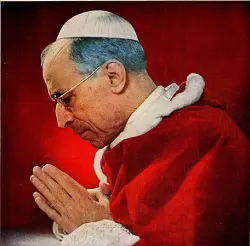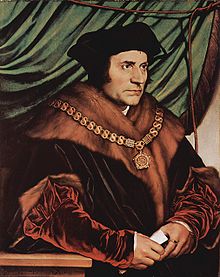The Two Faces of Vatican II
Posted by Mundabor
A kind of debate is emerging on whether V II really was a game- changing event and ( in both cases) why.
In my opinion , V II was both: the starting point and the catalyst of the probably biggest crisis in the history of the Church and an event which, if taken literally, could be dismissed as an example of poor theological skills, even worse writing ability and , most importantly, an exercise in ambiguity.
It is in my eyes impossible to deny that if Vatican II has for now five decades been considered a seminal, fundamental event in the history of the Church there must have been something ( a lot, in fact) allowing the proposers of the theory to justify their opinion. To put it in a more brutal way, one cannot say that Mein Kampf was already Nazism in its accomplished, institutionalised form, but without Mein Kampf the entire ideology loses its basis.
If you ask me, the main difference in this parallelism with Mein Kampf is – to be further brutal – that whilst Hitler was at least coherent in his radically destructive attitude, the Vatican II documents wanted to – and the Pope of the V II era still want – be everything to everyone; custodians of Catholic traditions, but also radical innovators; defenders of Latins, and its saboteurs; promoters of sound liturgy, and abettors of its ravaging; defenders of Catholic truth, and promoters of “religious freedom” ; the list is very long.
This is why, fifty years later, the Vatican II documents are taken by both sides as evidence for the validity of their argument: Vatican II was an exercise in impossibilities and the fruit of the desire to make peace with the world whilst feigning orthodoxy. That it could not work that way was made apparent by the fact that the very Conciliar Father proceeded, once returned home , to make clear which side they stood on; nor did it came from the soon-to-be-beatified Pope of the day more resistance than an occasional complaining about the antics of those whose obedience and sound Catholicism he should have enforced. The Pope who so famously complained about the smoke of Satan was, with his weakness and indecisiveness, the first cause of the smoke in the first place.
The double soul of the Vatican II documents remains in today’s Church: the same orthodoxy mixed with neo-modernism wherever one turns, and the same shameless quest for approval with the occasional thin varnish of orthodoxy, reinforced here and there by a small troop of truly brave priests, bishops and cardinals who manage to fight the good fight in the middle of the devastation.
Coming to the present day, the reigning and doubtless soon to be beatified Pontiff – if Paul VI was good enough, who won’t? If a miracle could be found for him, for whom not? – has pretty much the same modus operandi: talk orthodox, but act heterodox; issue Summorum Pontificum, but care that it stays on the paper; talk about the need for Catholic instruction, but appoint at the head of the CDF one who doesn’t even know what perpetual virginity means; proclaim the year of faith, but look on whilst heresy spreads in Germany, Austria and Switzerland; I could go on….
Fifty year after Vatican II, the Church continues to suffer – and to cause suffering, and untold loss of souls – because she employs – from the very top to the very bottom – too many who do not understand the radical nature of every religious’ choice: here or there, with Christ or with the world, hated (but respected in the end, like the tough priests always are) or compromising (and in time reduced to an innocuous laughing-stock, like the trendy ones always are).
The contemporary Church – and the contemporary Popes – are clearly in the middle, and the Church has a good number of people who would want to be good, but do not think to the end – even when they are in good faith – what being good – if one really wants to be good – ultimately entails: being hated, insulted, isolated, perhaps at times persecuted, and always uncomfortable.
The texts of Vatican II perfectly reflect all this, and you can find there both sides of the equation: the truth and the (endless) waffle, the courage and the easy slogans, the old and the new. They reflect the Church which issued them, nor can it be said that the encyclicals which came after the Council are much better, resembling more closely exercises in populism and approval grabbing than sobering collections of truths the faithful might not want to hear, but are salutary to them.
The year of faith – and the insisted invitation of the Pontiff to recover a supposed purity of the documents – will be a good occasion to confront, at regular intervals, the most controversial assertion of Vatican and post-Vatican II documents with the truths the Church has always maintained. An unpleasant and at times boring exercise but probably a necessary one is we want to slowly shift the debate from the legend of the bad post- Vatican II times notwithstanding the good Vatican II documents to the more sobering reality of the mess of post Vatican II times, originated by the ambiguous and double-faced Vatican documents.
Still – and coming back to my original assertion – I do maintain that bad as it was, Vatican II was not an exercise in dogmatic definition nor had ever any pretence of infallibility however intended. It can, therefore, be thrown into the garbage bin in its entirety without causing any damage whatsoever. When this is done, it is not that the truths reflected by the Vatican II document – in their “hunt with the hounds” parts – will be thrown away: they were there before, and they will remain exactly what they were. What will change, is that the entire “run with the hare” parts (the ambiguities, and the insisted flirting with the world and search for its approval) will be disposed of once and for all.
We are not there, of course, and the “run with the hare and hunt with the hounds” mentality is still very much en vogue in the Vatican as well as in many other corridors.
One day we’ll get there, I am sure. But the sooner we get rid of the legend of the “good Vatican II documents”, the better.
If you ask me, the Second Vatican Council was evil: evil in the mentality which informed it, evil in the willingly ambiguous documents it produced, and evil in the mess which that mentality and those documents invariably created. Of course, it wasn’t all bad: in this world, nothing ever is. Even the most satanic heretic would never write documents openly in opposition to everything that is true, it being obvious to everyone with a brain that heresy only then has a chance, if it is mixed with the truth.
Still, as everything that has been created during and after V II can be dismantled without taking anything away of the beauty, splendour and truth that were before in their entirety, I frankly cannot see why the operation should not be carried out.
We’ll arrive there one day, I think, but it will take some time, perhaps a couple of generations. I am personally not dismayed, as I think of all the people who lived in times of extreme Church corruption, and kept their simple and solid faith in the knowledge that the Church is more than the follies of the present Pope or the corruption of the present cardinals.
If they have done it and have gone through life in faith, I can’t see why we should not be able to do the same.
Long live the Church. Death to Vatican II.
Mundabor
Posted on October 24, 2012, in Catholicism and tagged "Spirit of Vatican II", Conservative Catholic, conservative catholicism, Hermeneutic of Embarrassment, Vatican II. Bookmark the permalink. Comments Off on The Two Faces of Vatican II.
Comments are closed.





















You must be logged in to post a comment.